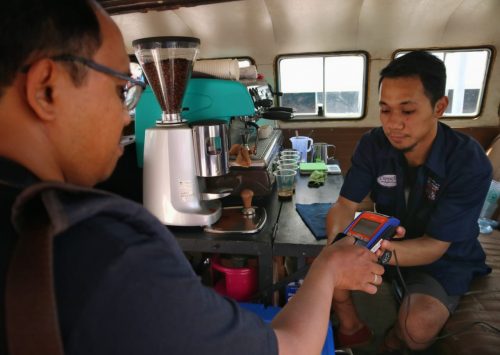
Bank Rakyat Indonesia (BRI), the country’s second-largest lender by asset, said its loan disbursement to the SMEs, a segment in the first quarter this year had exceeded the level at the beginning of the pandemic Covid-19.
The figure presents the latest positive signal for Indonesia’s robust economic growth in the first quarter, despite dealing with shocks from the third pandemic wave driven by the Omicron variant and inflation stemming from high global commodity prices and the geopolitical conflicts in Ukraine.
BRI’s loan disbursement to the SME segment rose 29 percent to Rp 21.3 trillion in the January to March period this year compared to Rp 16.5 trillion in the same period last year. The Covid-19 pandemic was first detected in Indonesia on 2 March 2020, and BRI only managed to disburse Rp 13.1 trillion for the SME segment in that quarter.
“We can see, based on the facts on the ground, that small and medium enterprises have started to recover strongly, even exceeding the early days of the pandemic,” Amam Sukriyanto, BRI’s director of small and medium business, said in a statement.
More businesses were confident to take on more loans, which they use for operation or expansion, in the period. BRI said 46,306 businesses received the loan in the first quarter, up from 33,269 and 23,581 customers in the same period last year and 2020, respectively.
Amam said that BRI was now more optimistic that Indonesia’s economy would grow more robust this year, as most credit is absorbed by productive sectors and spread relatively evenly across regions, not only in big cities.
“Sectors related to basic needs, such as trade, dominate BRI’s credit distribution in the small and medium segments, reaching 61 percent of the total SME loans,” he said. He said that the agricultural sector accounted for 12 percent of the loans, and the labour-intensive housing sector followed with a 7 percent contribution.
SME segment had also seemed to recover from the pandemic hit, Amam said. At its peak in December 2020, BRI had to restructure 47.38 percent of its SME loan portfolio, reported Jakarta Globe.
“This proportion continues to drop dramatically, and now it’s only 36.19 percent. It is also interesting that in the first quarter of 2022 alone, more than 7,000 of our customers had recovered their business, and they again showed the ability to pay their loans,” he said.

















